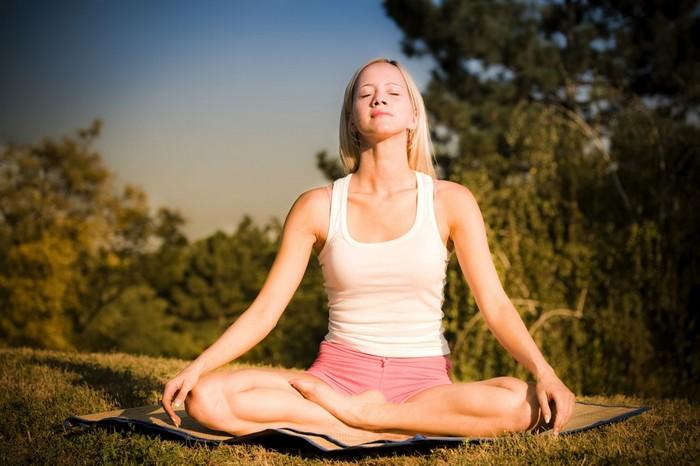Origins and Significance
Kumbhaka Pranayama, a pivotal practice within the ancient discipline of yoga, centers on the deliberate retention of breath. Derived from Sanskrit, “Kumbhaka” means “pot” or “container,” symbolizing the breath being held within the body. This technique is rooted in the traditional yogic texts, such as the Hatha Yoga Pradipika and Patanjali’s Yoga Sutras, which highlight breath control (pranayama) as a critical step towards achieving higher states of meditation and spiritual enlightenment.
The significance of Kumbhaka lies in its ability to bridge the gap between the physical and the metaphysical aspects of yoga. By mastering breath retention, practitioners aim to control the prana, or life force energy, thereby enhancing their physical vitality, mental clarity, and spiritual growth. Kumbhaka is often practiced as part of a broader pranayama regimen and is considered an advanced technique that requires careful guidance and gradual progression.
Benefits
The practice of Kumbhaka Pranayama offers a myriad of benefits that encompass physical, mental, and spiritual well-being:
1. Physical Benefits:
Enhanced Lung Capacity: Regular practice can significantly improve lung function and increase respiratory efficiency.
Improved Cardiovascular Health: By promoting efficient oxygen utilization, Kumbhaka helps in regulating blood pressure and heart rate.
Detoxification: Holding the breath encourages the expulsion of toxins from the body through improved circulation and oxygenation.
2. Mental Benefits:
Increased Focus and Concentration: The discipline required for breath retention sharpens the mind and enhances cognitive function.
Stress Reduction: Kumbhaka activates the parasympathetic nervous system, promoting relaxation and reducing stress and anxiety levels.
Emotional Balance: By regulating breath, practitioners can achieve better control over their emotions and reactions.
3. Spiritual Benefits:
Heightened Awareness: Kumbhaka fosters a deeper connection with one’s inner self, facilitating spiritual awakening and growth.
Energy Regulation: Managing the flow of prana through breath retention balances the body’s energy channels (nadis), promoting overall harmony.
Step-by-Step Instructions
Practicing Kumbhaka Pranayama requires patience and precision. Here is a step-by-step guide for beginners:
Preparation:
- Find a quiet and comfortable place to sit. Use a cushion if necessary to ensure your spine is straight and relaxed.
- Close your eyes and take a few deep breaths to settle your mind and body.
Inhalation (Pooraka):
- Inhale deeply and steadily through your nose, filling your lungs completely. Focus on expanding your abdomen and chest.
Retention (Kumbhaka):
- Hold your breath gently. Beginners should start with a few seconds and gradually increase the duration as they become more comfortable. Ensure that your body remains relaxed during retention.
- Concentrate on the point between your eyebrows (Ajna Chakra) or on your heart center (Anahata Chakra) to maintain focus.
Exhalation (Rechaka):
- Exhale slowly and completely through your nose. Ensure the exhalation is controlled and steady, emptying your lungs fully.
Rest:
- After exhalation, take a few normal breaths before beginning the next cycle.
- Repeat the process for 5-10 minutes, gradually extending the duration of Kumbhaka as your practice deepens.
Variations
Kumbhaka Pranayama has several variations, each with unique benefits and levels of complexity:
1. Antara Kumbhaka: Breath retention after inhalation. This is the most commonly practiced form and is ideal for beginners.
2. Bahya Kumbhaka: Breath retention after exhalation. This advanced form requires significant practice and control and is often introduced after mastering Antara Kumbhaka.
3. Kevala Kumbhaka: Spontaneous breath retention without conscious effort. It is considered the pinnacle of pranayama practice, where breath retention occurs naturally due to heightened meditative states.
Scientific Research and Evidence
Modern scientific research supports many of the traditional claims regarding the benefits of Kumbhaka Pranayama:
1. Lung Function and Respiratory Health: Studies have shown that regular practice of breath retention exercises can improve lung capacity and overall respiratory health. A study published in the Journal of Clinical and Diagnostic Research found significant improvements in vital capacity and forced expiratory volume among yoga practitioners who included Kumbhaka in their routines.
2. Cardiovascular Benefits: Research indicates that Kumbhaka Pranayama can positively affect heart rate variability (HRV), a marker of cardiovascular health. A study in the International Journal of Yoga demonstrated that pranayama practices, including breath retention, reduced blood pressure and heart rate, indicating improved autonomic regulation.
3. Mental Health and Stress Reduction: Numerous studies highlight the impact of pranayama on mental health. A study in the Journal of Alternative and Complementary Medicine found that Kumbhaka Pranayama significantly reduced stress and anxiety levels, attributed to the activation of the parasympathetic nervous system.
4. Cognitive Function: Research published in the International Journal of Yoga shows that breath retention practices enhance cognitive performance and executive function, likely due to increased oxygenation and improved neural efficiency.
Precautions and Contraindications
While Kumbhaka Pranayama offers numerous benefits, it is crucial to approach the practice with caution:
1. Medical Conditions:
Individuals with cardiovascular conditions, hypertension, or respiratory issues such as asthma should consult a healthcare provider before practicing Kumbhaka.
Pregnant women should avoid breath retention exercises.
2. Proper Guidance:
Beginners should practice Kumbhaka under the guidance of a qualified yoga instructor to ensure correct technique and avoid potential strain.
3. Gradual Progression:
Start with short durations of breath retention and gradually increase as your comfort and capacity improve. Overextending breath retention can lead to dizziness or discomfort.
4. Body Awareness:
Pay attention to your body’s signals. If you experience discomfort, dizziness, or shortness of breath, release the retention and return to normal breathing.
5. Mental State:
Avoid practicing Kumbhaka if you are feeling extremely stressed or anxious, as it may exacerbate these conditions.
Conclusion
Kumbhaka Pranayama, the art of breath retention, is a profound practice that offers a multitude of benefits for the body, mind, and spirit. Rooted in ancient yogic traditions, it has been validated by modern scientific research for its positive impact on respiratory health, cardiovascular function, mental clarity, and stress reduction. By following proper guidelines and approaching the practice with mindfulness and caution, practitioners can unlock the transformative potential of Kumbhaka and enhance their overall well-being.














